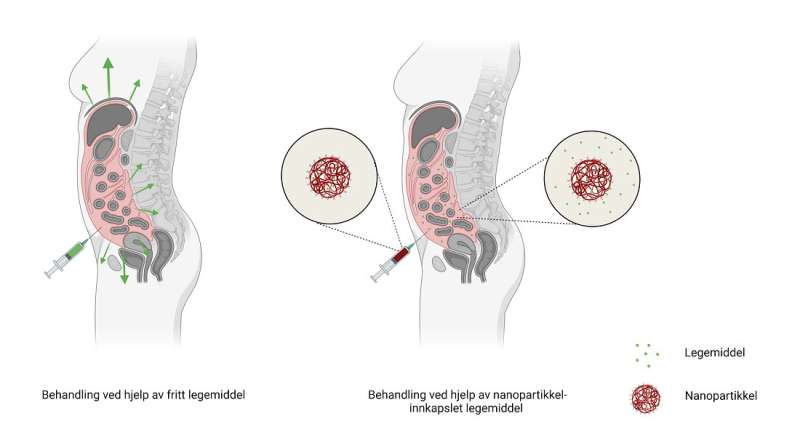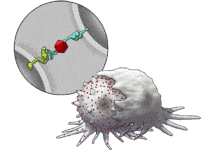
Researchers have found that nanotechnology can increase chemotherapy’s effectiveness. The new research could be good news for people who develop peritoneal cancer in the future.
“This patient group needs more effective treatment methods,” says Astrid Hyldbakk, who recently completed her doctorate at NTNU’s Department of Physics. She is now employed as a researcher for SINTEF Industry in Biotechnology and Nanomedicine.
Cancer in the stomach and intestinal region often spreads to the peritoneal cavity. Peritoneal cancer is difficult to detect, and therefore the cancer often develops long before treatment begins. Unfortunately, the treatment methods often work poorly.
“Late diagnoses and ineffective treatment mean that patients with peritoneal cancer do not have a good prognosis,” says Hyldbakk.
Chemotherapy drugs in peritoneal cavity for too short a time
Surgery is the most common treatment for peritoneal cancer today, along with chemotherapy to kill any cancer cells that remain after surgery.
“But the chemotherapy drugs don’t stay in the abdominal cavity for long enough to work properly,” says Hyldbakk.
In addition, the chemo drugs can spread to healthy parts of the body, where they cause damage and can result in serious side effects. But Hyldbakk’s research provides hope for better treatment.
“Encapsulating the medicine in tiny nanoparticles enables us to keep the medicine in the cavity longer. We can also specially design these nanoparticles so that they deliver the drugs primarily to the cancer cells rather than to healthy cells,” says Hyldbakk.
Hyldbakk studied this method as part of her doctoral research. She worked with research groups at NTNU, SINTEF and the Oslo University Hospital Radium Hospital. The research is published in the journal Nanomedicine: Nanotechnology, Biology and Medicine.
“We encapsulated the cytotoxic agent in nanoparticles. These are approximately 100 nanometers in diameter, or one ten-thousandth of a millimeter. We injected these into the peritoneum of mice and rats,” says Hyldbakk.
In other words, this treatment is not quite ready for use by humans yet. But Hyldbakk’s results are promising.
Binds to tumors and releases medicine
“The drug particles remain in the peritoneal cavity longer and bind specifically to the tumors, where they open and release the cytotoxic agent directly to the cancer cells. A larger amount of the medicine reaches these cancer cells instead of the healthy tissue, thereby increasing the efficacy of the drug and reducing the side effects,” says Hyldbakk.
The research groups believe that delivering chemotherapy using nanoparticles is a highly promising new strategy for treating people who develop peritoneal cancer. More research is needed, however.
“Now we have to thoroughly characterize and test this method to ensure that the treatment is both safe and effective. This is an important step before we can use the technology on humans,” says Hyldbakk.
Last year, researchers from SINTEF created the company NaDeNo. This company will lead future work in collaboration with SINTEF and the Norwegian Radium Hospital. The hope is that they will one day soon be able to make this technology available to patients as well.
More information:
Astrid Hyldbakk et al, Intraperitoneal administration of cabazitaxel-loaded nanoparticles in peritoneal metastasis models, Nanomedicine: Nanotechnology, Biology and Medicine (2023). DOI: 10.1016/j.nano.2023.102656
Citation:
Nanotechnology can provide more effective treatment for patients with peritoneal cancer (2023, June 20)
retrieved 27 June 2023
from https://medicalxpress.com/news/2023-06-nanotechnology-effective-treatment-patients-peritoneal.html
This document is subject to copyright. Apart from any fair dealing for the purpose of private study or research, no
part may be reproduced without the written permission. The content is provided for information purposes only.

